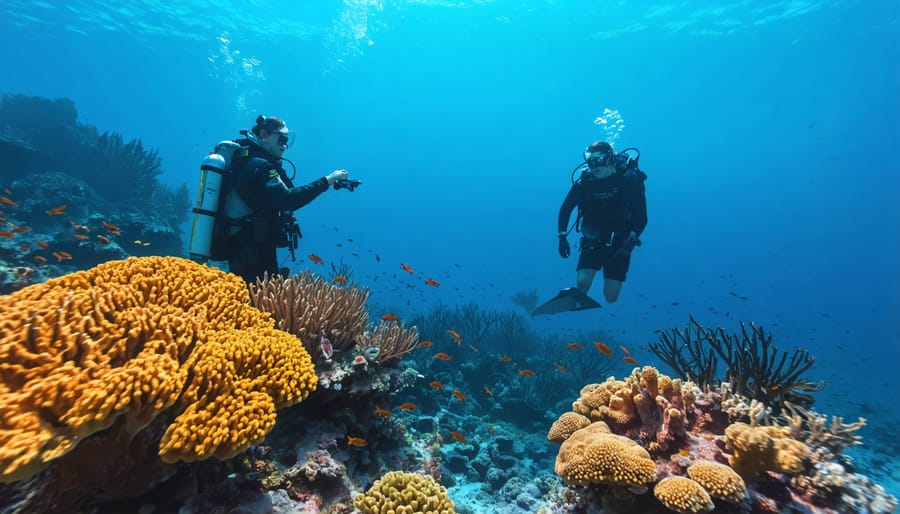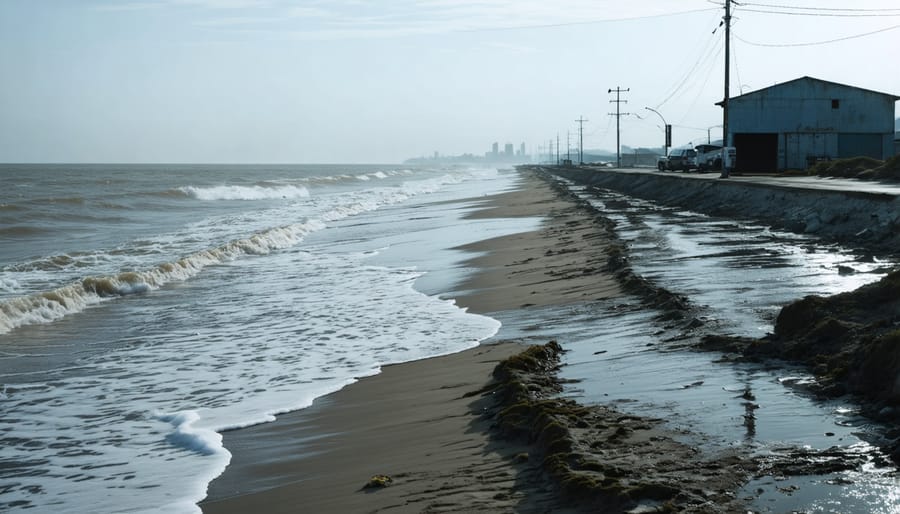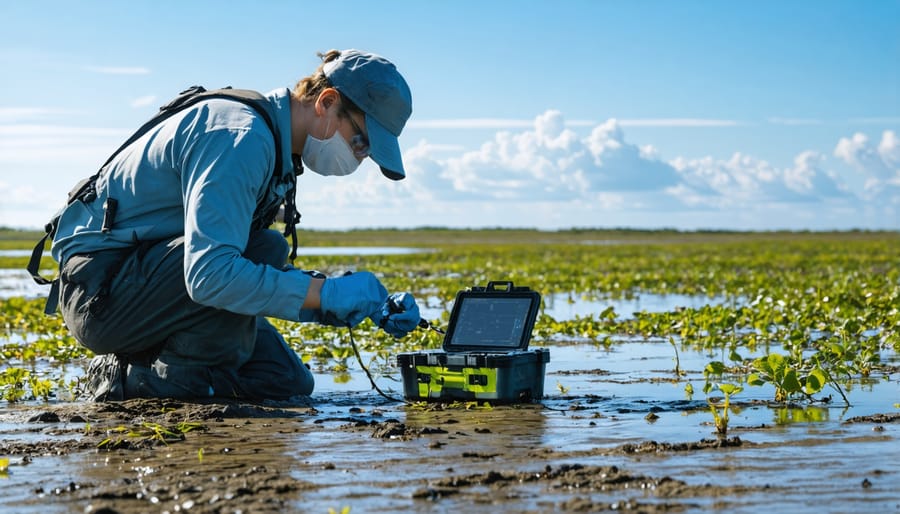
Coastal ecosystems face unprecedented threats from climate change, pollution, and overfishing. Scientific journals play a pivotal role in advancing our understanding of these challenges and developing effective solutions. By bridging the gap between cutting-edge research and real-world application, publications like Journal of Coastal Management empower scientists, policymakers, and communities to protect and restore our precious coastal resources.
These journals serve as essential platforms for sharing knowledge, sparking collaboration, and driving evidence-based decision making. From groundbreaking studies on coral reef resilience to innovative strategies for sustainable fisheries management, the findings showcased in these pages hold the key to safeguarding marine biodiversity for generations to come.
By engaging a broad audience – from seasoned researchers to curious students – coastal management journals also foster public awareness and inspire grassroots action. Through compelling storytelling and accessible science communication, they remind us that we all have a stake in the health of our oceans and coasts. Together, we can turn the tide on marine degradation and build a future where thriving coastal ecosystems support thriving human communities.
Key Challenges in Coastal Management
Climate Change Impacts
Climate change poses significant threats to coastal zones, as documented in numerous studies published in coastal management journals. Rising sea levels, caused by melting ice caps and thermal expansion, lead to increased coastal erosion, flooding, and saltwater intrusion into freshwater aquifers. This not only affects human communities living near the coast but also disrupts delicate coastal ecosystems. Ocean acidification, another consequence of increased atmospheric carbon dioxide, hinders the ability of calcifying organisms like corals and shellfish to build their skeletons and shells. This can have cascading effects throughout the marine food web. Warming temperatures alter ocean currents, species distributions, and primary productivity, leading to shifts in ecosystem dynamics and potential loss of biodiversity. Coastal management journals play a crucial role in documenting these climate change impacts and informing strategies to mitigate and adapt to these challenges. By providing a platform for scientists to share their findings, these journals help bridge the gap between research and policy, enabling evidence-based decision-making for the conservation and sustainable management of coastal resources in the face of a changing climate.

Anthropogenic Pressures
Coastal ecosystems face numerous anthropogenic pressures that threaten their health and biodiversity. Rapid coastal development, driven by population growth and urbanization, has led to habitat destruction and fragmentation. The construction of ports, marinas, and coastal infrastructure disrupts natural shorelines and alters sediment dynamics, impacting sensitive habitats like wetlands and seagrass beds. Pollution, including marine debris, chemical contaminants, and nutrient runoff from agricultural and urban sources, degrades water quality and harms marine life. Microplastics, in particular, have become a pervasive issue, accumulating in the food chain and affecting even the smallest organisms. Unsustainable fishing practices, such as overfishing, destructive fishing methods, and bycatch, deplete fish populations and damage marine habitats. Climate change exacerbates these pressures, with rising sea levels, ocean acidification, and increased storm intensity further stressing coastal ecosystems. Addressing these anthropogenic pressures requires a multi-faceted approach, including sustainable coastal management, strict pollution control measures, and the adoption of ecosystem-based fisheries management. By understanding and mitigating human impacts, we can work towards protecting and restoring the invaluable coastal environments that support an incredible diversity of life and provide essential ecosystem services to communities worldwide.
The Role of Scientific Research

Monitoring and Assessment Techniques
Monitoring and assessing the health of coastal ecosystems is crucial for effective management and conservation. Innovative techniques are being developed to track changes over time and detect early warning signs of ecosystem distress. Remote sensing technologies, such as satellite imagery and aerial photography, provide a bird’s-eye view of coastal habitats, allowing scientists to map and monitor large areas efficiently. Underwater surveys using advanced equipment like ROVs (Remotely Operated Vehicles) and AUVs (Autonomous Underwater Vehicles) enable detailed data collection in hard-to-reach locations. These robotic tools are equipped with high-resolution cameras, sensors, and sampling devices to gather information on water quality, species abundance, and habitat structure.
Acoustic monitoring techniques, including underwater hydrophones and echolocation, are used to track marine mammal populations and study their behavior. Genetic analysis of environmental DNA (eDNA) from water samples is an emerging method for assessing biodiversity and detecting the presence of rare or elusive species. Long-term monitoring programs, such as the Global Coral Reef Monitoring Network, rely on standardized protocols and citizen science initiatives to collect data on reef health indicators like coral cover, fish populations, and water quality. By involving local communities and volunteers in monitoring efforts, these programs foster stewardship and raise awareness about the importance of coastal conservation. The integration of traditional ecological knowledge from indigenous communities with modern scientific methods provides a holistic approach to understanding and managing coastal ecosystems. Through the application of these diverse monitoring and assessment techniques, scientists can better understand the complex dynamics of coastal environments and inform effective management strategies.
Case Studies of Successful Conservation
The Journal of Coastal Management has been instrumental in driving successful conservation initiatives across the globe. One notable example is the restoration of mangrove forests in Southeast Asia. Researchers published their findings on the critical role of mangroves in coastal protection, biodiversity, and carbon sequestration. This led to targeted efforts to restore specific coastal areas, resulting in the planting of millions of mangrove seedlings and the development of community-based management plans.
Another success story comes from the Great Barrier Reef, where journal articles highlighted the devastating impact of coral bleaching caused by rising ocean temperatures. These findings spurred a multi-faceted approach to reef conservation, including the establishment of marine protected areas, the development of heat-resistant coral strains, and the implementation of more sustainable fishing and tourism practices.
In the United States, research published in coastal management journals has guided the restoration of vital oyster reefs along the Atlantic and Gulf Coasts. By providing a scientific foundation for these projects, the journals have helped secure funding, inform restoration techniques, and monitor the long-term success of these efforts in improving water quality and providing habitat for diverse marine life.
These case studies demonstrate the tangible impact that scientific research can have when effectively communicated and applied through the platform of specialized journals. By bridging the gap between academia and real-world conservation, the Journal of Coastal Management continues to play a vital role in protecting and preserving our planet’s precious coastal ecosystems.
Bridging Science and Policy
Collaborative Frameworks
In coastal management, collaborative frameworks are essential for developing effective, science-based solutions to complex challenges. These frameworks bring together scientists, policymakers, and stakeholders from diverse backgrounds to share knowledge, resources, and expertise. By fostering open dialogue and collaboration, these partnerships ensure that research findings are translated into actionable strategies for coastal conservation and sustainable development.
One key aspect of collaborative frameworks is the integration of local and traditional knowledge with scientific data. This approach recognizes the valuable insights and experiences of coastal communities, who have a deep understanding of their environment and the impacts of human activities. By engaging these stakeholders in the research process, scientists can gain a more comprehensive understanding of coastal ecosystems and develop solutions that are culturally appropriate and socially acceptable.
Collaborative frameworks also play a crucial role in bridging the gap between science and policy. By facilitating communication and knowledge exchange between researchers and decision-makers, these partnerships ensure that scientific findings inform policy development and management practices. This evidence-based approach leads to more effective and targeted interventions, maximizing the impact of conservation efforts and resources.
Ultimately, collaborative frameworks in coastal management demonstrate the power of collective action in addressing global environmental challenges. By bringing together diverse perspectives and expertise, these partnerships foster innovation, build trust, and create a shared vision for a sustainable future.

Overcoming Barriers to Implementation
Overcoming barriers to implementing findings from coastal management journals requires a multi-faceted approach. One significant challenge is bridging the gap between scientific research and policy decision-making. Researchers must effectively communicate their findings to policymakers and stakeholders in an accessible and compelling manner. This can be achieved through targeted outreach, such as policy briefs, workshops, and collaborative partnerships between scientists and decision-makers.
Another barrier is the limited resources available for coastal management initiatives. Governments and organizations must prioritize funding for research, monitoring, and implementation of conservation strategies. Innovative financing mechanisms, such as public-private partnerships and ecosystem service valuation, can help secure the necessary resources.
Political hurdles, including competing interests and short-term economic priorities, can also hinder the application of journal findings. Building broad public support for coastal conservation through education and advocacy can help create the political will needed to enact change. Engaging local communities and stakeholders in the research and decision-making process can foster a sense of ownership and commitment to implementing sustainable management practices.
Despite these challenges, the urgent need to protect coastal ecosystems demands that we find ways to overcome these barriers. By fostering collaboration, innovation, and public engagement, we can translate the valuable insights from coastal management journals into effective action on the ground.
Public Engagement and Education
Accessible Science Communication
Journals specializing in coastal management play a vital role in making complex scientific research accessible to a wider audience. Many of these publications are now focusing on distilling intricate studies into engaging, easy-to-understand formats that appeal to the general public. By presenting research findings in a clear and concise manner, often accompanied by compelling visuals, these journals bridge the gap between the scientific community and the public.
One notable example is the use of infographics and interactive web features to explain key concepts and research outcomes. These visual aids help break down complex ideas into digestible pieces, making it easier for readers to grasp the significance of the research without getting bogged down in technical jargon. Additionally, some journals are now producing short videos and podcasts that feature interviews with leading researchers, allowing them to share their insights and experiences in a more personal and relatable way.
By making scientific research more accessible, these journals are not only informing the public about the latest developments in coastal management but also inspiring people to take action. When people understand the challenges facing our coasts and the potential solutions, they are more likely to support conservation efforts and make environmentally conscious decisions in their daily lives.
Citizen Science Opportunities
Coastal management journals actively encourage citizen science opportunities, inviting the public to contribute to data collection and monitoring projects. These initiatives not only raise awareness about the importance of coastal conservation but also provide valuable data for researchers. For example, the Coastal Education and Research Foundation (CERF) organizes annual “Volunteer Beach Profile Monitoring” events, where participants learn about coastal processes while collecting data on beach erosion and accretion. Similarly, the “CoastSnap” project, promoted by the Journal of Coastal Conservation, enables citizens to contribute to shoreline monitoring by taking photos of specific coastal locations using their smartphones. By participating in these projects, individuals gain a deeper understanding of the challenges facing coastal ecosystems and become active participants in the scientific process. Journals play a crucial role in promoting these opportunities, bridging the gap between the scientific community and the general public, and fostering a sense of shared responsibility for the health of our coasts.
Conclusion
Coastal management journals play a vital role in advancing our understanding of marine ecosystems and guiding conservation efforts. By providing a platform for scientists to share their research findings, these publications contribute to the growing body of knowledge about coastal environments and the challenges they face. From rising sea levels and ocean acidification to pollution and habitat loss, the insights gained through studies published in these journals help inform evidence-based solutions.
Moreover, coastal management journals serve as a bridge between the scientific community and policymakers. By translating complex research into actionable recommendations, these publications enable decision-makers to develop more effective strategies for protecting and restoring coastal habitats. This collaboration between scientists and policymakers is essential for addressing the urgent threats facing our oceans and ensuring the long-term sustainability of marine resources.
As we look to the future, ongoing research and conservation efforts will be critical for safeguarding the health and resilience of coastal ecosystems. By supporting the work of scientists and promoting the dissemination of their findings through coastal management journals, we can continue to deepen our understanding of these dynamic environments and develop innovative solutions to the challenges they face. Ultimately, the collective efforts of researchers, policymakers, and engaged citizens will be essential for protecting the incredible diversity of life that calls our coasts home.
jessica
Ava Singh is an environmental writer and marine sustainability advocate with a deep commitment to protecting the world's oceans and coastal communities. With a background in environmental policy and a passion for storytelling, Ava brings complex topics to life through clear, engaging content that educates and empowers readers. At the Marine Biodiversity & Sustainability Learning Center, Ava focuses on sharing impactful stories about community engagement, policy innovations, and conservation strategies. Her writing bridges the gap between science and the public, encouraging people to take part in preserving marine biodiversity. When she’s not writing, Ava collaborates with local initiatives to promote eco-conscious living and sustainable development, ensuring her work makes a difference both on the page and in the real world.
